7 steps of the decision-making process
- Identify the decision.
- Gather relevant info.
- Identify the alternatives.
- Weigh the evidence.
- Choose among the alternatives.
- Take action.
- Review your decision.
Robert Frost wrote, “Two roads diverged in a wood, and I—I took the one less traveled by, and that has made all the difference.” But unfortunately, not every decision is as simple as “Let’s just take this path and see where it goes,” especially when you’re making a decision related to your business.
Whether you manage a small team or are at the head of a large corporation, your success and the success of your company depend on you making the right decisions—and learning from the wrong decisions.
Use these decision-making process steps to help you make more profitable decisions. You'll be able to better prevent hasty decision-making and make more educated decisions.
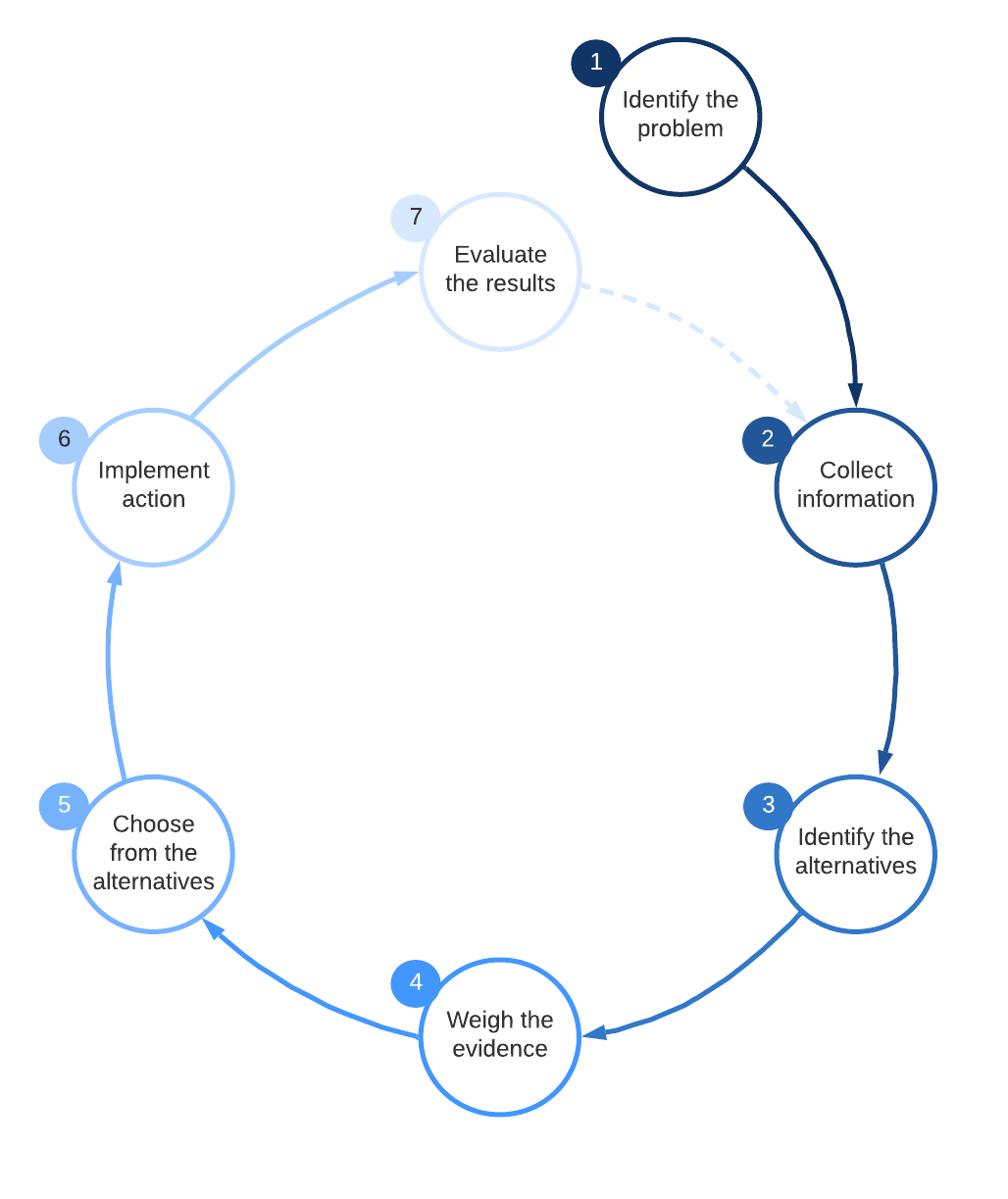
Defining the business decision-making process
The business decision-making process is a step-by-step process allowing professionals to solve problems by weighing evidence, examining alternatives, and choosing a path from there. This defined process also provides an opportunity, at the end, to review whether the decision was the right one.
7 decision-making process steps
Though there are many slight variations of the decision-making framework floating around on the Internet, in business textbooks, and in leadership presentations, professionals most commonly use these seven steps.
1. Identify the decision
To make a decision, you must first identify the problem you need to solve or the question you need to answer. Clearly define your decision. If you misidentify the problem to solve, or if the problem you’ve chosen is too broad, you’ll knock the decision train off the track before it even leaves the station.
If you need to achieve a specific goal from your decision, make it measurable and timely.
2. Gather relevant information
Once you have identified your decision, it’s time to gather the information relevant to that choice. Do an internal assessment, seeing where your organization has succeeded and failed in areas related to your decision. Also, seek information from external sources, including studies, market research, and, in some cases, evaluation from paid consultants.
Keep in mind, you can become bogged down by too much information and that might only complicate the process.
3. Identify the alternatives
With relevant information now at your fingertips, identify possible solutions to your problem. There is usually more than one option to consider when trying to meet a goal. For example, if your company is trying to gain more engagement on social media, your alternatives could include paid social advertisements, a change in your organic social media strategy, or a combination of the two.
4. Weigh the evidence
Once you have identified multiple alternatives, weigh the evidence for or against said alternatives. See what companies have done in the past to succeed in these areas, and take a good look at your organization’s own wins and losses. Identify potential pitfalls for each of your alternatives, and weigh those against the possible rewards.
5. Choose among alternatives
Here is the part of the decision-making process where you actually make the decision. Hopefully, you’ve identified and clarified what decision needs to be made, gathered all relevant information, and developed and considered the potential paths to take. You should be prepared to choose.
6. Take action
Once you’ve made your decision, act on it! Develop a plan to make your decision tangible and achievable. Develop a project plan related to your decision, and then assign tasks to your team.
7. Review your decision
After a predetermined amount of time—which you defined in step one of the decision-making process—take an honest look back at your decision. Did you solve the problem? Did you answer the question? Did you meet your goals?
If so, take note of what worked for future reference. If not, learn from your mistakes as you begin the decision-making process again.
Tools for better decision-making
Depending on the decision, you might want to weigh evidence using a decision tree. The example below shows a company trying to determine whether to perform market testing before a product launch. The different branches record the probability of success and estimated payout so the company can see which option will bring in more revenue.
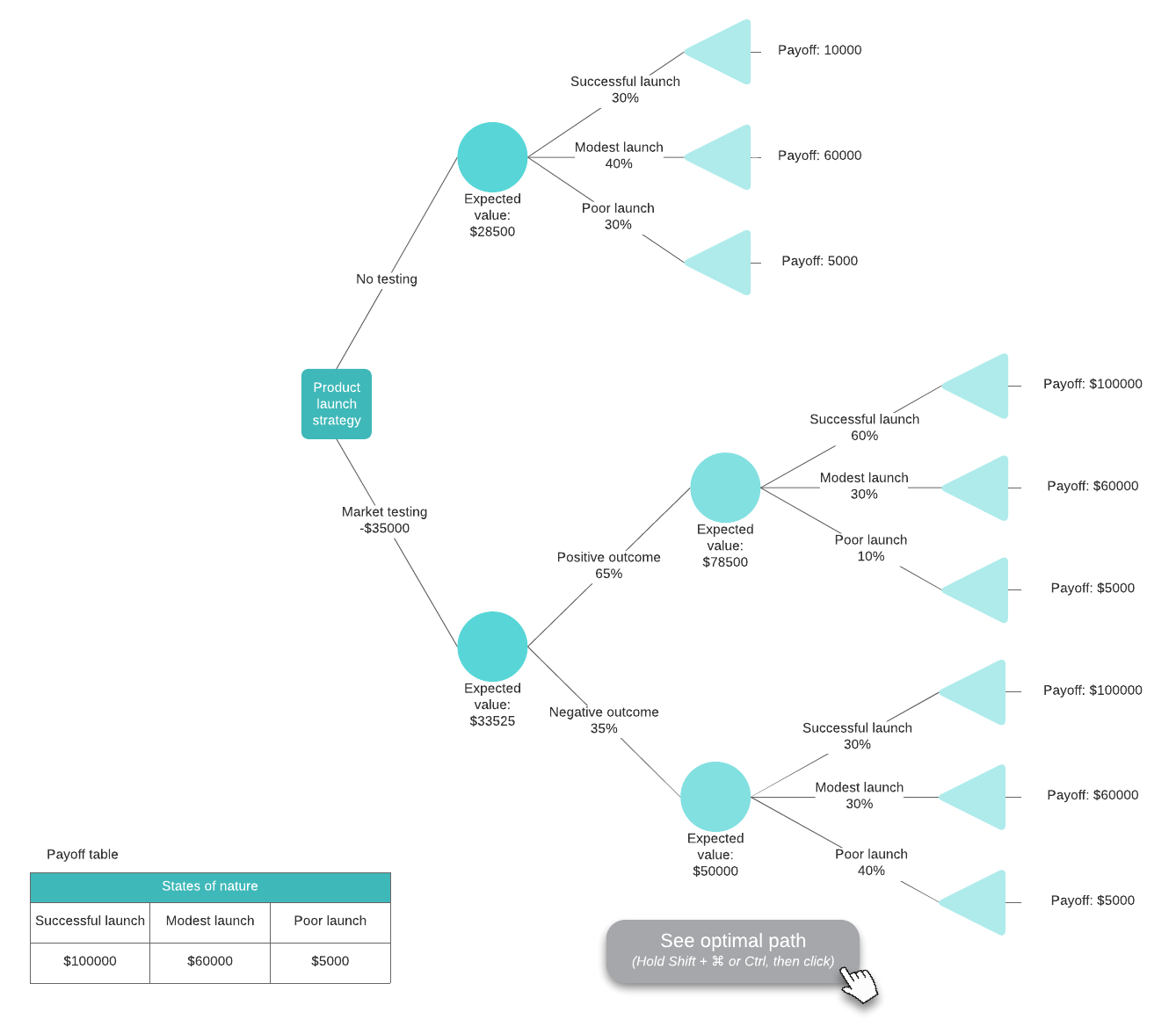
Visual Activities are a perfect choice for quickly synthesizing ideas and gaining consensus. Use these dynamic activities with your team members to turn qualitative feedback into actionable insights and easily make decisions in seconds.
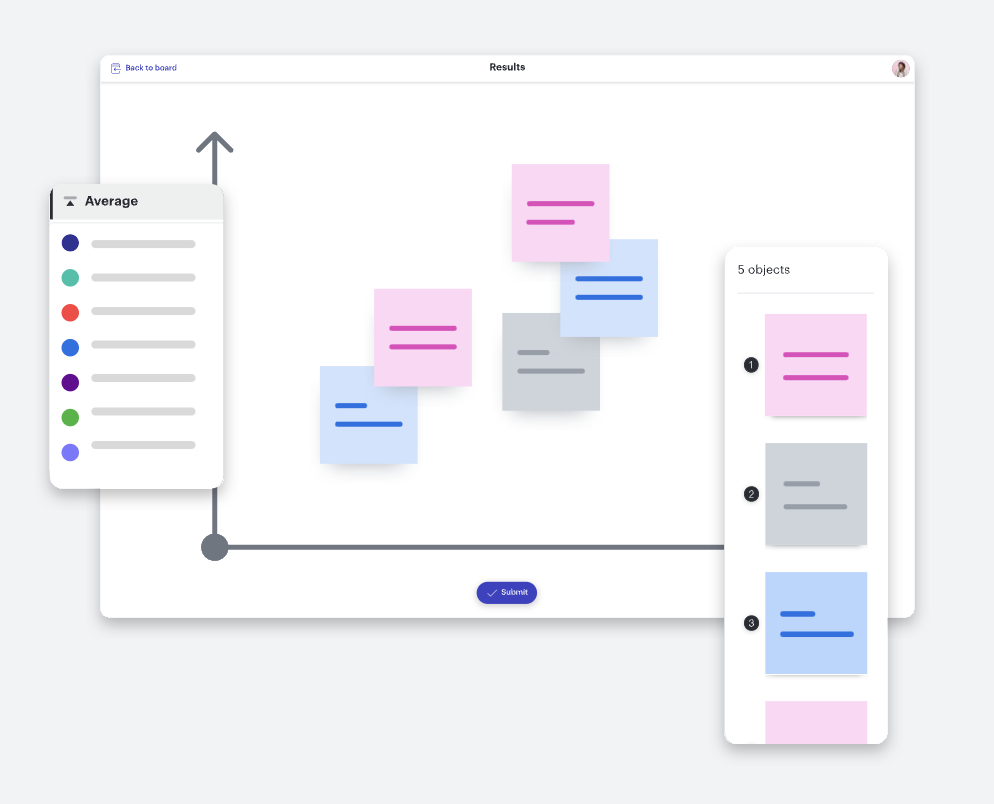
A decision matrix is another tool that can help you evaluate your options and make better decisions. Learn how to make a decision matrix and get started quickly with the template below.
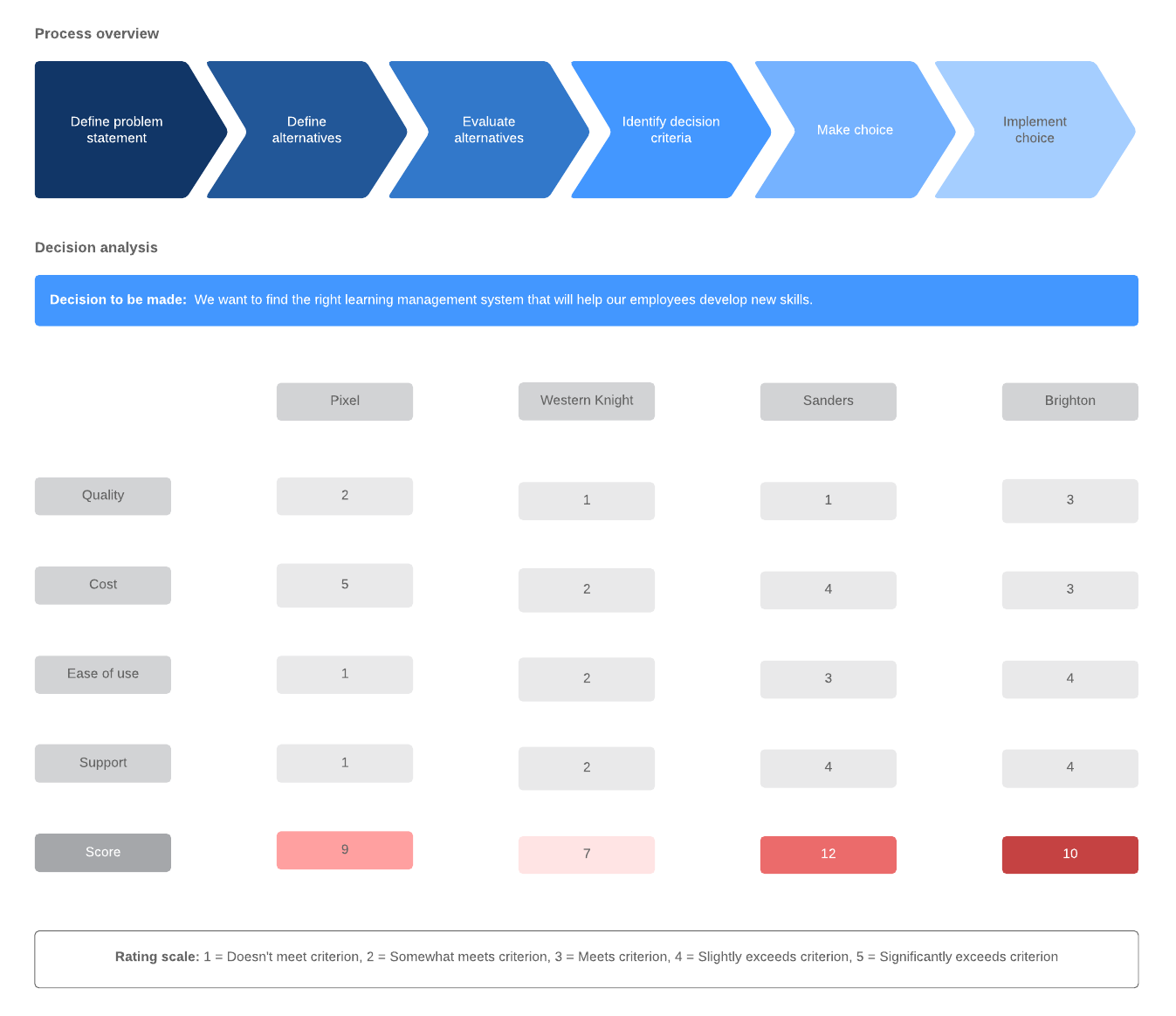
You can also create a classic pros-and-cons list, and clearly highlight whether your options meet necessary criteria or whether they pose too high of a risk.
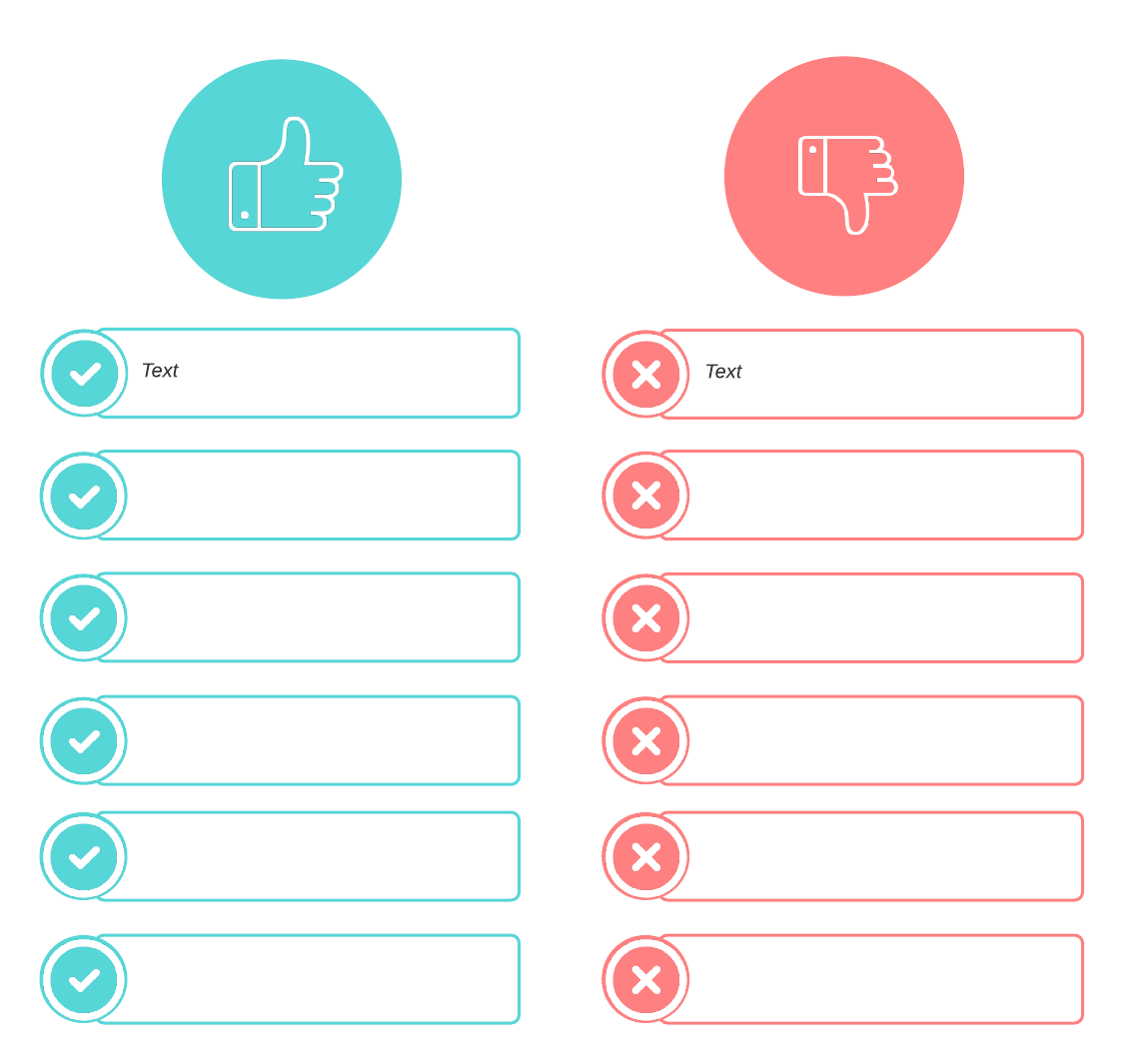
With these 7 steps we've outlined, plus some tools to get you started, you will be able to make more informed decisions faster.

Explore additional strategies to help with your decision-making process.
Learn moreAbout Lucidchart
Lucidchart, a cloud-based intelligent diagramming application, is a core component of Lucid Software's Visual Collaboration Suite. This intuitive, cloud-based solution empowers teams to collaborate in real-time to build flowcharts, mockups, UML diagrams, customer journey maps, and more. Lucidchart propels teams forward to build the future faster. Lucid is proud to serve top businesses around the world, including customers such as Google, GE, and NBC Universal, and 99% of the Fortune 500. Lucid partners with industry leaders, including Google, Atlassian, and Microsoft. Since its founding, Lucid has received numerous awards for its products, business, and workplace culture. For more information, visit lucidchart.com.
Related articles
How to make a decision tree in Excel
Use this guide to learn how to make a decision tree in Microsoft Excel—either directly in Excel using Shapes or using a simple Lucidchart integration.
Definition and examples of the consumer decision-making process
Review these steps of the consumer decision-making process and put yourself in the customer’s shoes to make an impact with your sales or marketing.

